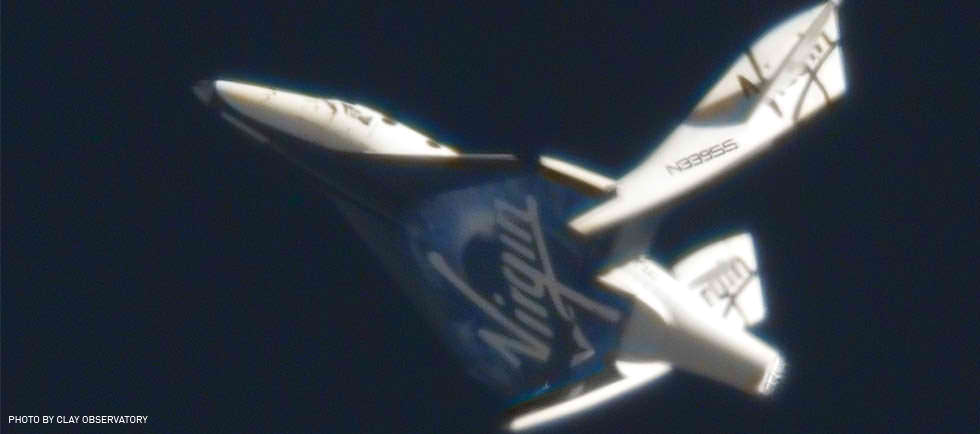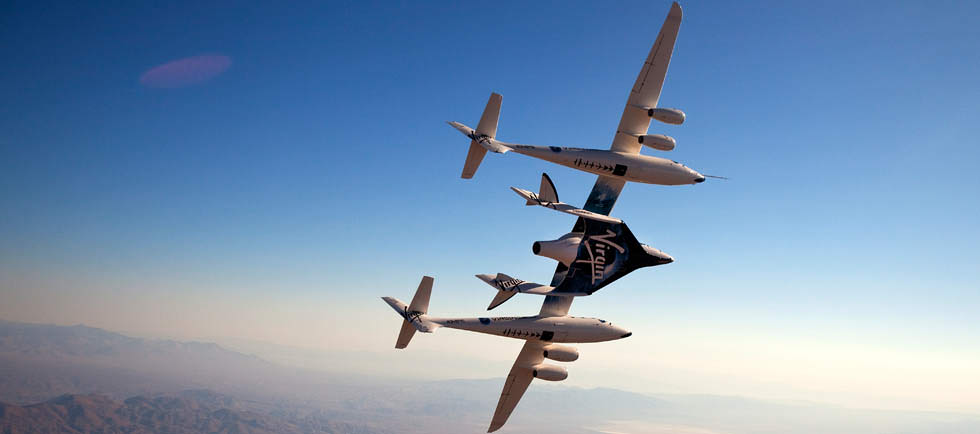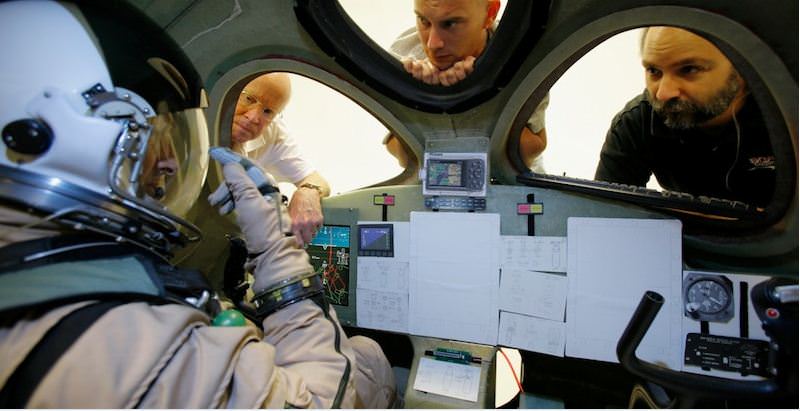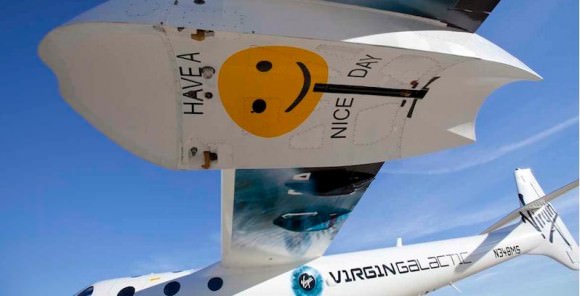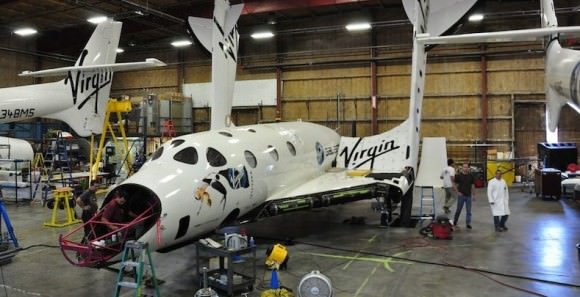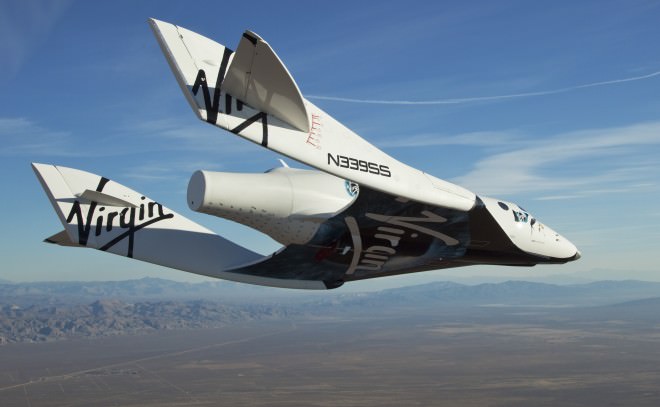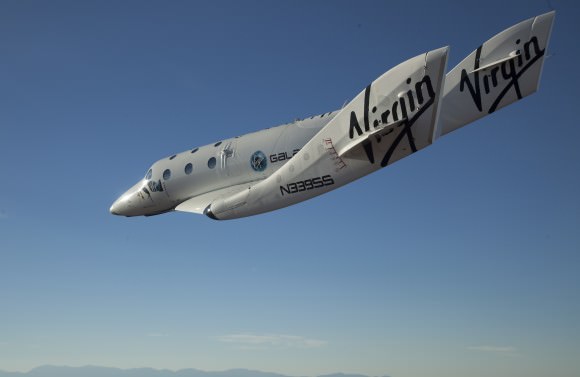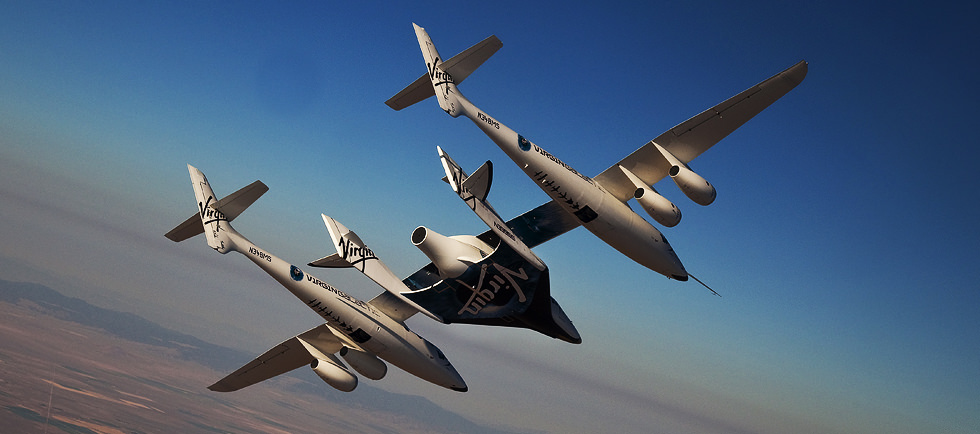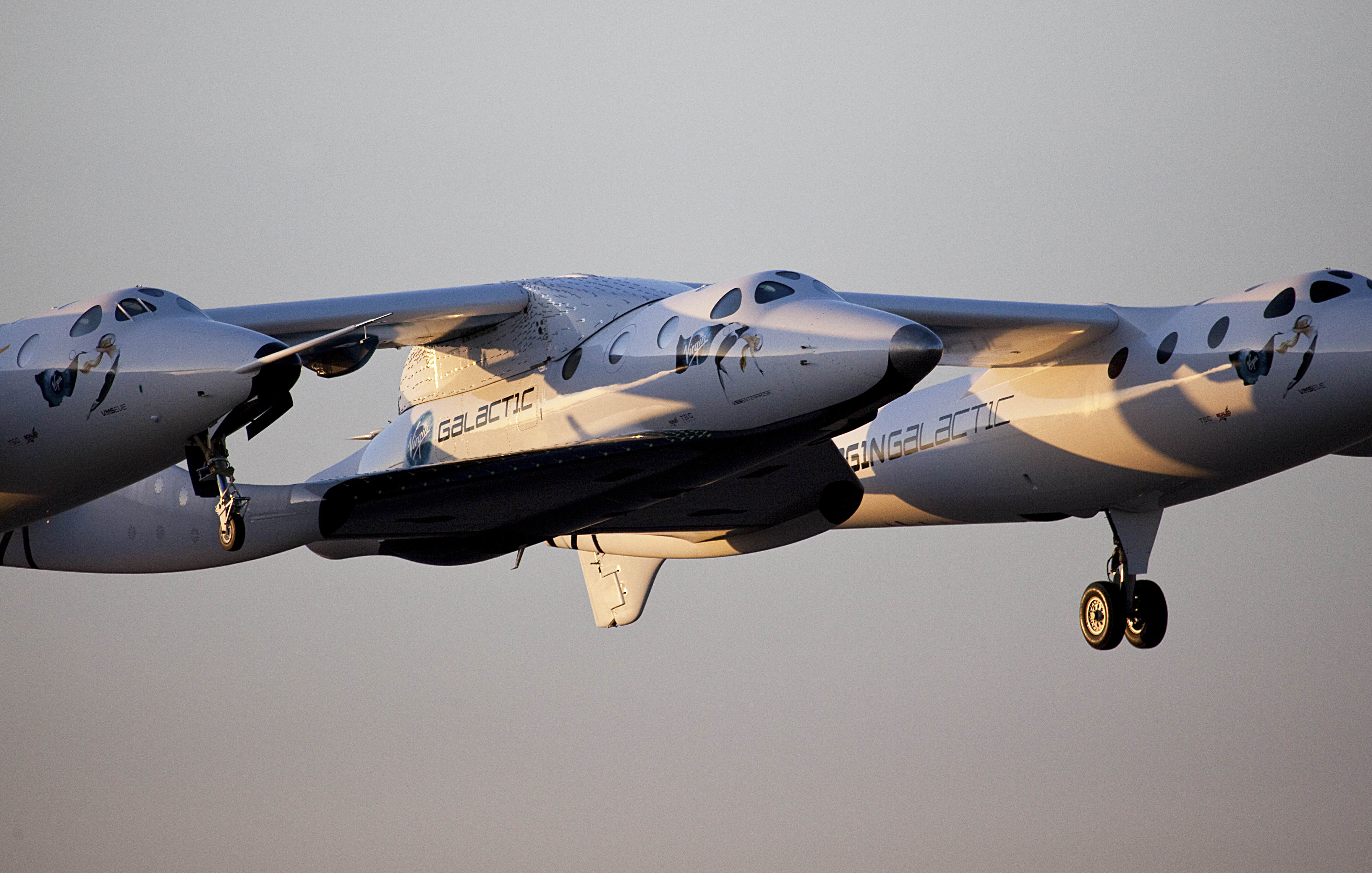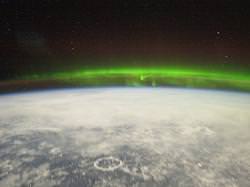[/caption]
Virgin Galactic’s SpaceShipTwo achieved a major milestone early Wednesday 4th May 2011, as it successfully demonstrated its unique reentry ‘feather’ configuration for the first time. This test flight, the third in less than two weeks, brings powered test flights and — ultimately — commercial operations a step closer.
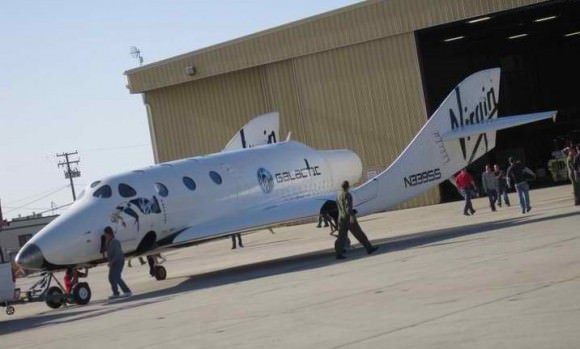
SpaceShipTwo (SS2), named VSS Enterprise, went airborne attached to WhiteKnightTwo (WK2) carrier aircraft, VMS Eve at 6:43AM PDT at the Mojave Air and Spaceport in California. After a 45 minute climb to 51,500 feet, SS2 was released from VMS Eve and established a stable glide profile before deploying, for the first time, its re-entry or “feathered” configuration by rotating the tail section of the vehicle upwards to a 65 degree angle to the fuselage. It remained in this configuration with the vehicle’s body at a level pitch for approximately 1 minute and 15 seconds while descending, almost vertically, at around 15,500 feet per minute, slowed by the powerful shuttlecock-like drag created by the raised tail section. At around 33,500 feet the pilots reconfigured the spaceship to its normal glide mode and executed a smooth runway touchdown, approximately 11 minutes and 5 seconds after its release from VMS Eve.
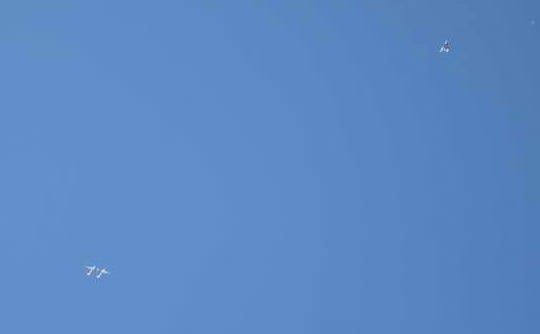
Virgin Galactic says all objectives for the flight were met and detailed flight data is now being analyzed by the engineers at Scaled Composites, designers and builders of Virgin Galactic’s sub-orbital spacecraft.
“This morning’s spectacular flight by VSS Enterprise was its third in 12 days, reinforcing the fast turnaround and frequent flight-rate potential of Virgin Galactic’s new vehicles,” said George Whitesides, CEO and President of Virgin Galactic. “ We have also shown this morning that the unique feathering re-entry mechanism, probably the single most important safety innovation within the whole system, works perfectly. This is yet another important milestone successfully passed for Virgin Galactic, and brings us ever closer to the start of commercial operations. Credit is due to the whole Scaled team, whose meticulous planning and great skill are changing the course of history.”
“In all test flight programs, after the training, planning and rehearsing, there comes the moment when you have to go up there and fly it for real,” said Pete Siebold, who along with Clint Nichols piloted SS2. “This morning’s flight was a test pilot’s dream. The spaceship is a joy to fly and the feathered descent portion added a new, unusual but wonderful dynamic to the ride. The fact that it all went to plan, that there were no surprises and that we brought VSS Enterprise back to Mojave safe and sound is a great testament to the whole team.”
For more information see the Virgin Galactic website.
Many thanks to Tiffany Titus for allowing Universe Today to post her images of today’s test flight. You can see more of her images from the flight on her Facebook page.

